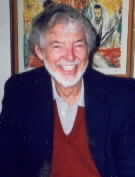Arthur S. Iberall Distinguished Lecture
December 5, 2003 z University of Connecticut z 4:00 p.m.
Room 160 Bousfield Psychology Building
“Life and the Sciences of Complexity”
F. E. Yates

Abstract
“Complexity” has burgeoned as a technical subject, both observational and theoretical, expanding since the 1970s under the very general heading of nonlinear dynamics. This lecture will begin with six classical examples of complex systems: the red spot of Jupiter, the Belousov-Zhabotinsky reaction, Bénard cells, weather, the transport of water in tall trees, and the life trajectory of a human being (from zygote to mature adult to death from “old age”). Each of these examples of complexity is a physical system, so the question arises: Is the physics we have today adequate, using any of its theories or themes, to “explain” these phenomena?
Since the mid-twentieth century various approaches to the modeling of complex systems have included: topological catastrophe theory (Thom), fractals (Mandelbrot), chaotic dynamics (Lorenz), dissipative structure theory (Prigogine), synergetics (Haken), dynamic/linguistic complementarity (Pattee), self-organizing criticality (Bak), quantum field theory (Vitiello), as well the works of Stuart Kauffman (e.g., Origins of Order) and Stephen Wolfram (A New Kind of Science). It will here be argued that the most synoptic approach is that of homeokinetics, invented by Arthur Iberall (with assistance from Harry Soodak).
Homeokinetics is a physically based heuristic that starts with Aristotle, Galileo and Newton, builds through statistical (especially fluid) mechanics and thermodynamics, and then extends the standard physics with some novel propositions. Through them it aims to increase the explanatory range of physics. An especially powerful feature is its emphasis on physical action (energy ´ time), quantized as nonlinear thermodynamic limit cycles, as the basis of temporal organization in complex, hierarchical systems.
Discussions of applications of homeokinetic principles to studies of bioenergetics (e.g., metabolism, photosynthesis) and of human aging (senescence and mortality) will conclude the lecture.
Arthur S. Iberall Distinguished Lecture Series
Dedicated to the exploration of connections between physical processes and their manifestations in nature, life, humankind, mind, and society. The series honors the physicist, Arthur S. Iberall (1918-2002), whose intellectual legacy includes homeokinetics, a method of applying the laws of thermodynamics to all self-organizing systems. His applied research contributed significantly to the development of the first space suit, the high-speed dental drill, stove surface burners, the fancy-stitch sewing machine, and the electric knife.
F. Eugene Yates has held appointments in physiology and medicine at Stanford University, Harvard University, University of Southern California, and most recently UCLA (from 1980 until retirement in 2001). He has published extensively on physical biology, endocrine/metabolic systems, cardiovascular physiology, bioengineering, semiotics, and aging. He is currently a science advisor to the John Douglas French Alzheimer’s Foundation and to the National Space Biomedical Research Institute in respect to NASA’s planning for a manned trip to Mars.